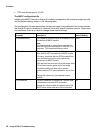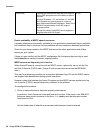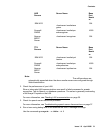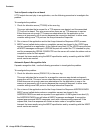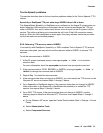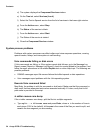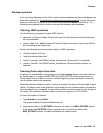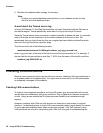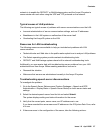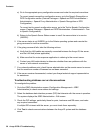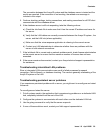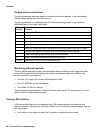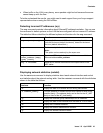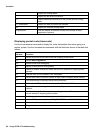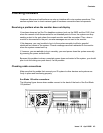
Contents
36 Avaya IR R2.0 Troubleshooting
3. Redefine the database table storage, if necessary.
Note:
Contact your internal database administrator or your database vendor for help
with this and other database tasks.
A word about the Tomcat server log
In Avaya IR Release 2.0, the Web Administration tool uses Tomcat as both the Web server
and servlet engine. Tomcat periodically writes data to a log on the Avaya IR server.
Since the Tomcat server does not provide a method internally to delete old data, it continually
adds to this data and will continue to do so unless cleaned up from time to time. We
recommend that you check these log files on a regular basis and delete old data files when
the size of the log file directory gets too large.
This file can be found at the following location:
/webadm/jakarta-tomcat-5.0.28/logs/localhost_log.<yyyy-mm-dd>.txt
where <yyyy-mm-dd> is the date of the last time time the log was written to. For example, if
the last date the log was written to was May 7, 2004, then the name of the log file would be:
localhost_log.2004-05-07.txt
Checking communications
Because voice system functions may be reliant on servers, checking LAN communications is
an important aspect of troubleshooting. You might need to work with your LAN administrator
to completely investigate LAN problems.
Checking LAN communications
To support voice response operations, an Avaya IR system may communicate with remote
servers that store databases, with proxy servers for Text-to-Speech and speech recognition,
or both. Using servers outside the IR system provides flexibility and increased storage
capacity.
However, problems with LANs and with servers can interrupt or stop access to required
functions. Understanding how to check LAN communications helps you to identify the cause
of voice response problems faster when servers are involved. If the VoIP feature is used,
LAN operations are critical to transmitting calls. With VoIP, the goal of troubleshooting the



